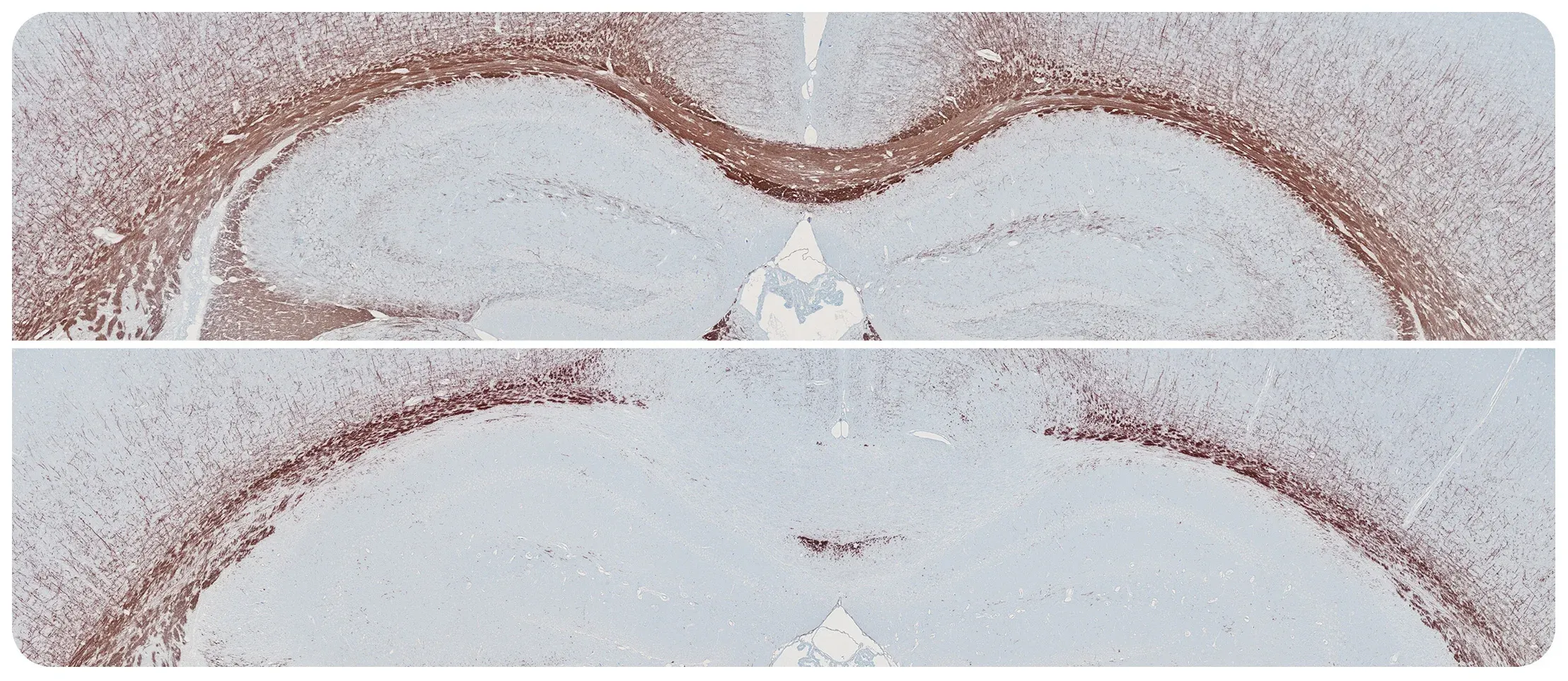Cuprizone Model Overview
The cuprizone multiple sclerosis mouse model of demyelination and remyelination is induced by feeding mice the copper-chelating cuprizone toxin. Cuprizone administration in mice models several aspects of human multiple sclerosis (MS), including central nervous system (CNS) loss of myelin, spontaneous remyelination, oligodendrocyte precursor cell (OPC) proliferation & maturation to myelinating oligodendrocytes, astrogliosis, and microgliosis. The myelin pathology and associated neuroinflammation observed in the cuprizone model in mice is most prominent the corpus callosum with highly predictable pathology that mimics MS lesions. Learn more in our Resource - Demyelination & Remyelination in the Cuprizone Model.
Unlike EAE, the cuprizone model of multiple sclerosis is not autoimmune mediated and the cuprizone induced white matter demyelination and remyelination are not confounded by a peripheral immune response. EAE and cuprizone mice model different aspects of MS pathology, and therapeutic studies are often performed in parallel.
Cuprizone Model Generation
- C57BL/6 mice are fed 0.2-0.3% cuprizone via diet (powdered chow or food pellets) or oral gavage to induce toxicity to mature oligodendrocytes and damage to the myelin sheath
- A more severe, chronic, mouse demyelination model can be generated by injecting rapamycin (i.p. 5 days per week)
- In our experience, the powdered chow diet route of administration provides the most reproducible results
Our Validated Cuprizone Mouse Model Measures
- Body weight
- Myelin-sensitive in vivo magnetic resonance imaging (MRI)
- Immunohistochemistry & multiplex immunofluorescence for myelin, oligodendrocyte precursor cells (OPCs), mature oligodendrocytes, and neuroinflammation (microglia & astrocytes) in the corpus callosum

Myelin Basic Protein (MBP) immunohistochemistry (IHC) staining of the corpus callosum in control mice (top) and mice after 5 weeks of cuprizone diet treatment (bottom).
Learn more about our characterization of this model, our validated measures, and our Preclinical Neuroscience CRO services.
Discover more about our Multiple Sclerosis Models
Related Content
Up-to-date information on Multiple Sclerosis and best practices related to the evaluation of therapeutic agents in MS animal models.
Experimental Autoimmune Encephalomyelitis (EAE) & Axonal Injury
This resource describes the methods available for measuring axonal damage & axon degeneration, including tissue markers and plasma & CSF neurofilament light chain (NfL; NF-L) levels, in the EAE model of multiple sclerosis (MS).
Demyelination & Remyelination in the Cuprizone Model
An overview of the methods available to measure myelin and oligodendrocytes in the cuprizone demyelination mouse model of multiple sclerosis (MS).




